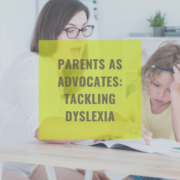School Day of Nonviolence and Peace
As much as we’d like to move on from the past, memories of the news stories involving school violence continue to haunt us. Anniversaries of the tragedies and “remembering the victims” news specials are an all too regular reminder that school violence in the United States is catastrophically unique, as opposed to the rest of the world.
As a teacher, I, of course, have theories as to why school violence is more prevalent here. My theories revolve around many of the same issues and concerns that surround the debate on U.S. gun violence as a whole—gun control, mental illness, instant national infamy via our media outlets, etc. We can theorize all day long, but that provides no solution. We must catch these tragedies before they occur—especially our school-related acts of violence. Tune-in, be aware, and look for the typical signs because all too often, where there is smoke, there is fire.
Signs that your child may be in trouble:
– Social and/or emotional withdrawal: This can be difficult to identify, especially because of the hormonal, brooding nature of teenagers. When a child seems exceptionally withdrawn from friends, family, and usual hobbies, this could indicate a major problem.
– Self-isolation: Children who shut others out and spend most of their time alone may be exhibiting signs of future issues. Spending time alone may be indicative of hostility or resentment towards peers.
– Signs of rejection: Similar to self-isolation, children who do not have many friends or opportunities to socialize with peers may experience feelings of rejection. This could lead to hostility and violence down the road.
– Being bullied: Research indicates that children and teens who have experienced bullying and violence are at risk for harming others in the future. Again, victims of bullying often internalize hostility until it has built up to an unmanageable level.
– Loss of interest in school/and or other activities: Students who appear to have “given up” on their academics or are suddenly displaying defiant or aggressive behaviors are sometimes trying to say something without verbally communicating. This type of frustration and negative attitude towards school could indicate that a child is on the verge of more serious methods of acting out.
– Expressions of violence or aggression on paper: This is a BIG one. If a child is struggling to communicate, socialize, or express themselves verbally, they may resort to other expressive forms. Journals, drawings, poems, or stories that display or discuss violence in an especially detailed manner are major red flags.
– History of impulsivity, bullying, or insubordination: Students with a lengthy history of defying authority, breaking rules/laws, and deliberately harming others are displaying blatant signs of future violence. This type of behavior screams, “I don’t care what happens to me, you, or anyone else!” Children that exhibit this type of behavior before the teenage years have a much higher chance of engaging in school violence than other children.
– Inappropriate level of interest or infatuation with weapons or violent images: Children that have an “obsession” with weapons, specifically firearms or knives, may be indicating signs of violent behavior later. Moreover, a child with an unusual level of interest in weapons, who also has access to firearms in the home, could pose a great risk.
There is no denying the severity of our nation’s problem with school violence. However, there are ways to restore and maintain the peace in our schools. It begins at home by knowing the signs of trouble and how to effectively intervene and provide support. Be available to your children, encourage positive social interaction, and help them understand the detrimental effects of bullying. Teachers must also be vigilant when it comes to identifying and reporting potential threats of violent behavior. Together, we can foster a safer future for our students.






